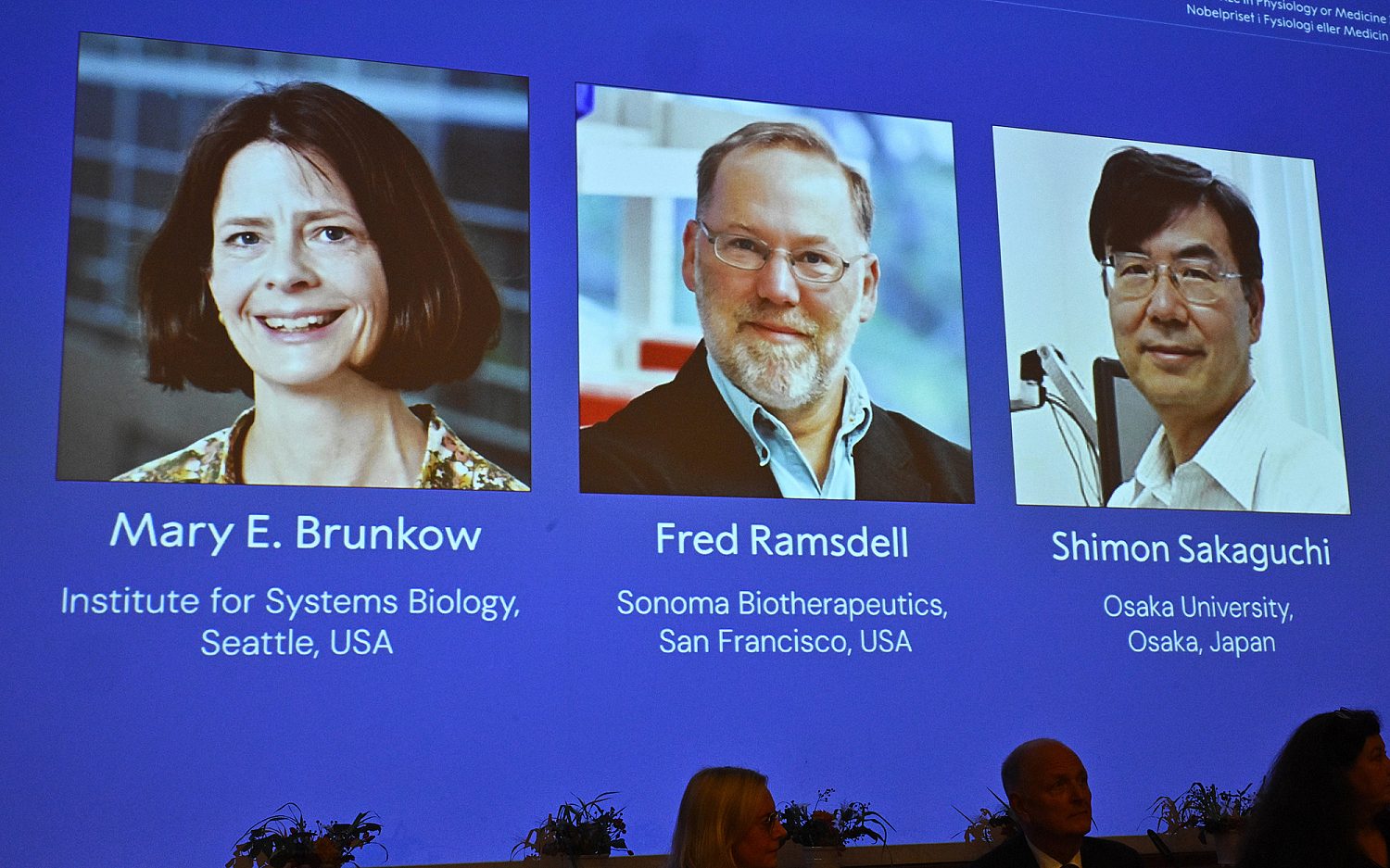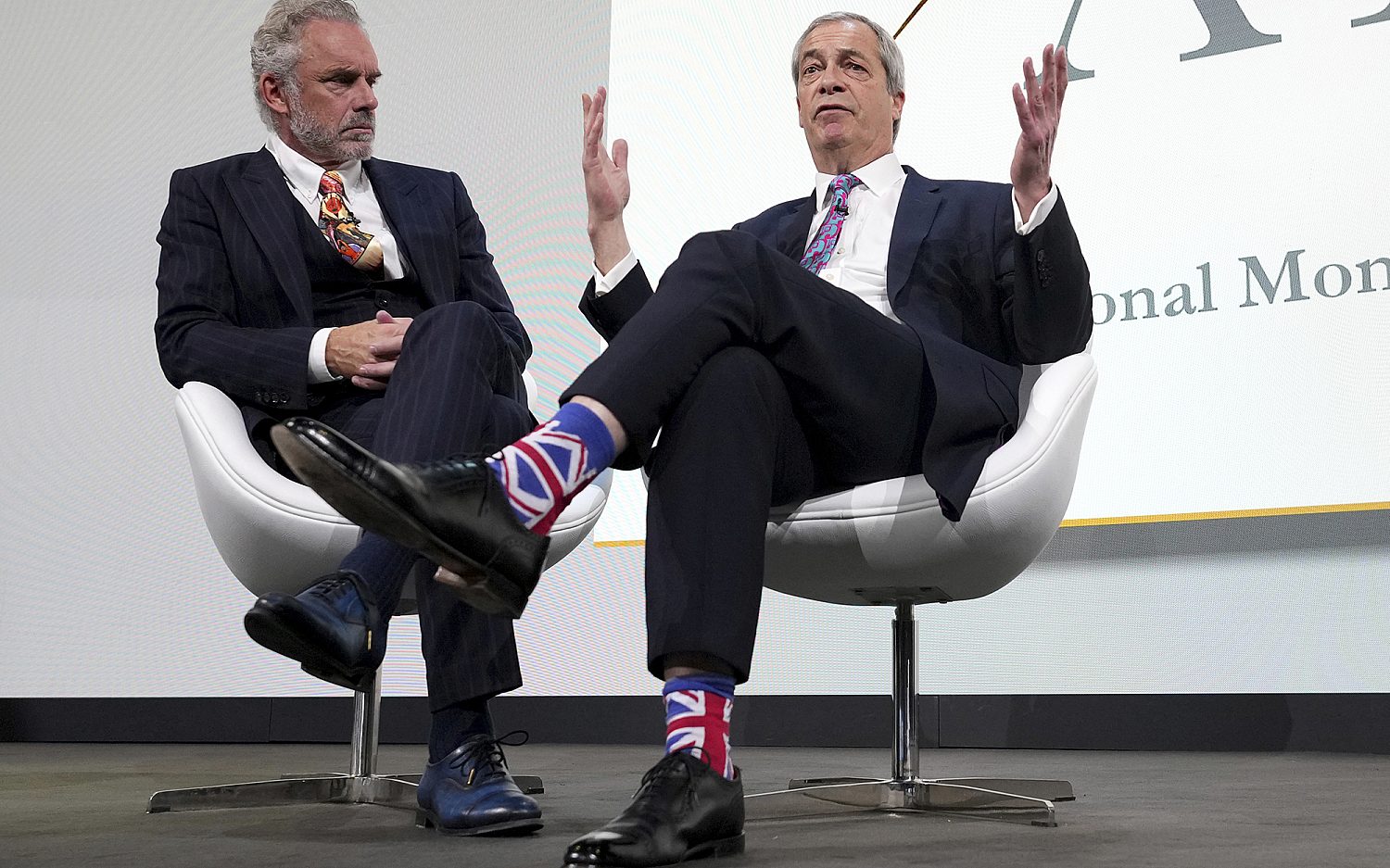What ex-gay men can teach us about marriage
Who better to explain the differences between ‘intergendered’ and ‘monogendered’ unions?
Sam Andreades ministered at a church in New York’s Greenwich Village for many years and founded G.A.M.E. (Gender Affirming Ministry Endeavor), which serves those with same-sex attraction who want to follow Christ. Andreades has just finished his Doctor of Ministry work at Covenant Theological Seminary in St. Louis, and his dissertation, which grew out of his pastoral experience, is titled “Does She Matter? Emotional Intimacy in Marriage in Light of Gender Distinction.”
Andreades interviewed Christian husbands with a gay background who are now happily married to women, asking why they prefer “intergendered” to “monogendered” marriage. He learned that gender distinction contributes depth and intimacy to marriages—and this sheds light on why God gave us the commands He did about heterosexual marriage. Here's an article he wrote for WORLD that brings out some of his key findings. —Marvin Olasky
The stones the builders rejected
The wave of same-sex marriage now breaks across the country amidst retreating (and diminishing) cries to defend traditional marriage, but very little is heard in the splashing about what makes one better than the other. It is worth pausing for air to ask: Are there actually any benefits to traditional marriages over same-sex marriages? Is there some reason the Bible prescribes one and not the other? When Jesus defined the institution by joining the two Genesis quotations, “God made them male and female. For this reason a man will leave his father and mother and be united to his wife …” (Mark 10:6-7), was He making a crucial point in making marriage an issue of gender?
There are people who can tell us the answer. There are those who can teach us the difference between “intergendered” unions (between two people of different genders) and “monogendered” unions (between those of the same gender). In fact, there are plenty of them in our churches. Sadly, they get ignored, insulted, or shunned, yet they are the ones before whom we should all be quiet and listen.
Who, you ask? Simply those who feel long-term same-sex attraction (SSA), and who may have even acted on those feelings in gay relationships in the past but who came to decide, in their Christian commitment, to marry the opposite gender instead. Ex-gay Christians who have been happily married for years are the best instructors on what the difference is. They have been there and can compare. It was to just these people that I turned to explore these questions of marriage in my doctoral qualitative research project[i] under Covenant Theological Seminary.
I decided to limit the scope of my study to husbands with SSA, talking in depth with them about how their Christian wives, as women, made a difference in their relationships. Based on the national conversation, you might expect that finding such men would be formidable. Actually, they were not hard to find at all. Just how many “mixed-orientation couples”[ii] reside in America is unknown,[iii] but author and ex-wife of a gay man, Amity Pierce Buxton, who founded the Straight Spouse Network serving thousands of spouses in similar situations, estimates the number to be 2 million.[iv] Not all of these are Christian or happy, of course, but there seem to be plenty that are. I know because they have been teaching me. What did I learn?
Love led to good sex
As sociologists, psychologists, policy-makers, and marriage counselors have realized the failing health of the institution of marriage in this country, they have focused a great deal of attention on what makes marriages work well. The answer, upon which these folks have converged, can be summed up as emotional intimacy. A variety of disciplines now understand achieving emotional closeness to be the prime determiner of a happy marriage. It is the thing that makes marriages last longer, grow stronger, and endure the more formidable shocks of life. It is the stuff of solid unions.
The first thing I learned in talking to the husbands in my study is that those espousing the power of emotional intimacy are right. As would be expected, SSA did indeed present an obstacle to closeness in these marriages. As one husband put it, “It is difficult because they [women] are different. And, in our case, where we had to work through that, initially without the sexual dynamic, it was really hard. Because there wasn’t even … you couldn’t kind of patch things up with sex.”
What I did not expect was the repeated confession that this seemingly insurmountable obstacle of SSA was overcome through emotional intimacy. Although I did not ask about it, most participants made some kind of statement, in passing, about how sexual intimacy with their wives grew from emotional intimacy with them. One said, “[Titillation from] the female body … always felt like it was kind of a reach to me … times I got … excited … was all emotional and psychological.” Another recalled how “the tenderness, the patience of … my wife toward me [awakened our] exploring one another. …” So the power of emotional intimacy to make marriages successful was confirmed in this unexpected way. This also comports with findings that some in mixed-orientation marriages experience a lessening of SSA over time.[v], [vi]
Could it be this good with a man?
The second thing I learned was that gender matters in making closeness in these marriages. This kind of research is great in its allowance of time to listen to one’s interviewees talk, so I got to hear many reasons why these men treasured their wives. As I pressed them about why they felt that they could not share the same intimacy with a man, a host of explanations issued forth. I eventually distinguished 28 distinct reasons for intergendered intimacy. Some of these reasons concerned the essential nature of women, as these men saw it. Others involved their wives’ gendered practices. But even the latter also depended on their being women. It was not just what they did, but who they were, doing what they did, that made these husbands feel, as one confessed, “To depend on her makes me more me.” So discussion of inherent feminine gender traits entwined with the wives’ consciously womanly deeds.
Some explanations were straightforward, such as making a baby together. In one particularly moving account, procreating another person forged powerful bonds within the couple. Other reasons were not so obvious. Men frequently mentioned the absence of competition in life with a woman, a “face-to-face posture,” unique, they felt, to an intergendered relationship, fostering unity. The lack of testosterone-fueled rivalry encourages sharing and vulnerability. A man will more likely confess his inner workings. Explaining how non-competitiveness fostered trust by removing limits to disclosure, one husband appreciated how his wife, just by being a woman, did not try to “one upmanship me in everything, compete, have the upper hand, so I could trust. …” Furthermore, the husband’s identity is cultivated as he is allowed his own uniqueness. These guys really went deep.
“That thing that’s missing, she supplies”
The most frequently identified way that gender distinction promoted intimacy was, simply, differentness itself. “Richness comes from differentness,” they said, relating how each bringing distinct gifts to the relationship fosters unity; how relying on each other’s varied responsibilities builds trust; how his not doing what she does—or not being able to—creates greater healthy dependence; how her gendered acts of service, distinct from his, support him; and how his identity is secured by how he complements her. Men often find sharing internal things tiresome, but these men’s sharing with their wives rocketed, just so they could find out how womanhood responds. Some studies on what heightens sexual passion in marriage show a similar dynamic often at work.[vii] All of these make sense, of course, once these gender-sensitive husbands point them out to us.
Sometimes the men talked about how their wives, in contrast to their male partners, bring an emotional awareness that cultivates companionship: “A woman brings a lot of life.” The exceptional emotional richness of women encourages even deeper sharing and trust: “Most women have the ability to understand and feel things at a different level from men, so I get a deeper connection from her perspective,” and, “Her sensitivities … give me room to risk things that with a man I would never risk.” One creatively pictured the emotional complementarity thus: “Men are like strings, women like balloons. Women rise in lofty splendor, but need the string to be tied down. But men, without them, are just strings dropped in the mud.”
The wife’s virtues, often dissimilar to the husband’s, constituted another locus of rationale for how gender matters. The husbands admired and were advanced by virtues they find unique in women: “Her femininity allows me to let my guard down,” and, “Her … gentle spirit, it invites me in [to a place of] security [that] unites us.” One husband eulogized, “She is very much an undergirding support of everything I do, and very strong. … It’s all very feminine. There is nothing masculine about her strength, which I love. I find … security and support in that.”
Called out by the other
Perhaps the most profound collection of reasons concerned the personal growth these men associated with their intergendered unions: “Her femininity has very much enhanced my masculinity,” and, “It’s not like my wife is particularly more mature than the [men] that I was with. … It’s just the two of us together … having to. … It’s just deeper. It is,” and “A different makeup, her womanhood … increases my understanding and has helped to unravel lies about me.” One of the reasons these husbands first sought an intergendered union was a lack of spiritual growth in their monogendered ones: “It left me self-focused,” and, “To be perfectly honest with you, when I was in a relationship with a man, I wanted a man to take care of me.” Now, instead, her nature, need, service, and desires call forth growth in him to be proactive for her: “Her femininity makes me want to do more … pulls me to where I would want to please her,” and, “The mystery of male and female union … is about ‘other’ … it called out of me fruit … I’m more awakened to being me. I’m a different man.”
One husband explained the dynamic at length:
“I need to dig down … more to be able to, as a man, to meet her needs as a woman, in a way that is very different than meeting the needs of a guy. … One man knows typically what another man desires or needs in many different ways. And women tend to know the same for other women. It’s that harder thing of … more of that mystery coming together and the unknown. … Yeah. I couldn’t say that enough … having to dig down deeper. … It’s impossible for two men to be challenged to the depth that opposite-sex relationships are going to challenge us. … I can actually become more than I ever thought I would be … to be more than I’ve ever been before, in relationship to her, to meet her needs, to be for her what she needs. …”
This is how it works: An intergendered relationship requires engagement with the otherness of woman, the demands and rewards of which engagement develop him into a more mature man, and so, paradoxically, more himself. This operation emotionally bonds him to the woman who brought it out. This may be why none of the husbands I interviewed would trade what they have now for what they had, in spite of being subject, now and again, to the temptation to check out a hot guy. Her comfort and confrontation called him to grow as a man.
These responses left no question that these happy husbands have found an intense intimacy through intergendered union, and that the womanhood of their partners has played a critical part in the depth of that intimacy—they would say an indispensable part. They speak of what she does, as well as who she is, as determinative in nurturing a securing, supportive unity, a trusting, sharing companionship, and an identity-forming interdependence. As one phrased it, “That’s not to say there … isn’t an ability to be compatible [with a man. But] I think in the deepest way … what I’ve experienced with her … I could never have had that, and didn’t have that [with a man].” This may all be seen as a way of saying what the Bible preaches, that gender is a gift given to build intimacy in relationships. It is probably no accident that the quintessential New Testament teaching on marital intimacy, Ephesians 5:22-33, is all about making gender distinctions in the relationship.
Seeing the heroes in our midst
From this brief sampling of their comparisons, it should be clear that those who self-consciously set up an intergendered house after years of monogendered ones have much to teach us. Married or not, faithful men (and women) with SSA should command our attention and respect. The church needs, not only to learn from, but also to laud these valiant souls as modern day heroes of the Christian faith. I say, “heroes” because they bear a burden in their discipleship that most of us will never know. They are being faithful where we are at ease. When the Lord hands out rewards in the end, these last shall be first. (Are they treated that way in your church?) Let us put them in places of honor, sit at their feet, and learn the meaning of gender in marriage.
____________
ENDNOTES
[i] In contrast to statistical research, this kind of research interviews a smaller number of people in great depth, hopefully granting a deep understanding of a particular experience.
[ii] The term is coined in Mark A. Yarhouse and others, “Characteristics of Mixed Orientation Couples: An Empirical Study,” Edification: The Transdisciplinary Journal of Christian Psychology 4, no. 2 (2011): 41, 42.
[iii] Ibid., 41.
[iv] Amity Pierce Buxton, “Writing Our Own Script: How Bisexual Men and Their Heterosexual Wives Maintain Their Marriages after Disclosure,” Journal of Bisexuality 1, no. 2-3 (2001): 155.
[v] Mark A. Yarhouse, Christine H. Gow, and Edward B. Davis, “Intact Marriages in Which One Partner Experiences Same-Sex Attraction: A 5-Year Follow-up Study,” Family Journal 17, no. 4 (2009), 330, found a lowering in the mean reported level of SSA from prior to the marriage to later times as the marriage continued.
[vi] In their extensive literature review, former Wheaton College professor of psychology Stanton L. Jones, along with Mark A. Yarhouse, the clinical psychologist who formed the Institute for the Study of Sexual Identity at Regent University, find that “nearly every study ever conducted on change of [sexual] orientation [by SSA people] found some evidence of change,” especially if the attempts were religiously motivated: Stanton L. Jones and Mark A. Yarhouse, Ex-Gays?: A Longitudinal Study of Religiously Mediated Change in Sexual Orientation (Downers Grove, IL: IVP Academic, 2007), 78, 94. Several dozen studies on change in orientation were published in the 1950s-1970s, but serious research disappeared when DSM removed homosexuality as a disorder from its pages in 1973. In the last ten years, there has been a resurgence of such studies, with more rigorous standards and similar results.
[vii] Sabino Kornrich, of the Center for Advanced Studies in the Social Sciences at Juan March Institute of Madrid, and Julie Brines and Katrina Leupp of the University of Washington, show that American couples with more gender distinct housework arrangements have more (and more vigorous) sex, in Sabino Kornrich, Julie Brines, and Katrina Leupp, “Egalitarianism, Housework, and Sexual Frequency in Marriage,” American Sociological Review 78, no. 1 (2013): 30, 42-43. To explain their results, they quote Pepper Schwartz to the effect that “introducing more distance or difference, rather than connection and similarity, helps to resurrect passion in long-term, stable relationships,” 30.
An actual newsletter worth subscribing to instead of just a collection of links. —Adam
Sign up to receive The Sift email newsletter each weekday morning for the latest headlines from WORLD’s breaking news team.




Please wait while we load the latest comments...
Comments
Please register, subscribe, or log in to comment on this article.